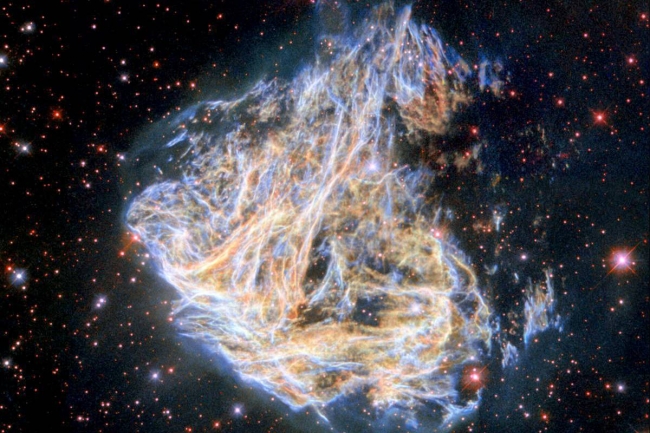The Hubble Space Telescope captured the supernova remnant DEM L 190, in a nearby galaxy, 160,000 light-years from Earth.
Also called LMC N49, the supernova is the brightest supernova remnant in the Large Magellanic Cloud, a satellite galaxy of our Milky Way, and is located in the constellation Dorado.
In an image taken by NASA and the European Space Agency’s Hubble Space Telescope, and published yesterday by Russia Today, the supernova remnant appears in the form of long, thin threads of incandescent gas, which are the remains of the catastrophic death of a huge star and the light from the explosion was visible on Earth billions of years ago. It will eventually recycle its components to create a new star in the Large Magellanic Cloud.
The world saw another image of DEM L 190, taken by the Hubble telescope and released in 2003. However, with the inclusion of improved image processing methods, this magnificent celestial spectacle is even more impressive.
The stunning recent image was created using data from two different astronomical probes, with the help of Hubble’s Wide Field Planetary Camera 2 (WFPC2), which was replaced by the more powerful Wide Field Camera 3 (WFC3), but during the his operational life has contributed to the cutting edge of science and produced a series of The amazing pictures of the universe.


